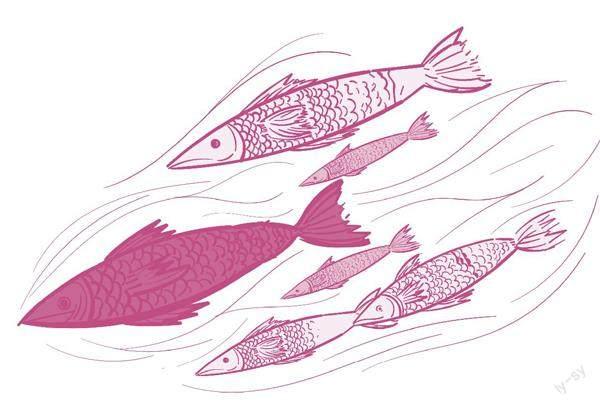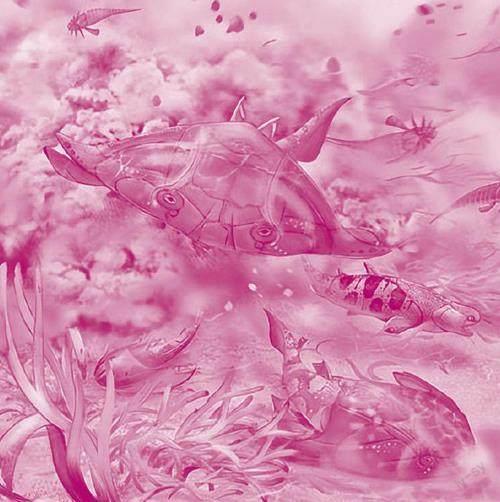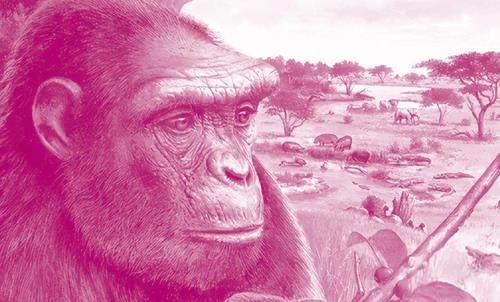Did HumansEvolve from Fish?人类是从鱼演化来的?
2023-09-17



Humans evolved from apes. This is what we learned in biology class. But what came before apes? Chinese scientists have discovered fossils that could enrich the evolutionary story of how humans evolved from fish.
According to four articles published in the journal Nature in late September last year, Chinese researchers found fish fossils that provide the “missing link” about the origin of the jaw, a key trait that 99.8 percent of vertebrate species have.
Zhu Min, a lead researcher of the studies from the Chinese Academy of Sciences, told China Daily that the findings drew a large amount of interest in the science world due to the importance of jaws in animal evolution.
我们在生物课上学过,人类是从类人猿进化而来的,但是在类人猿之前呢?中国科学家发现一批化石,完善了人类如何从鱼类演化而来的进化故事。
根据2022年9月下旬发表于《自然》杂志的四篇文章,中国研究人员发现的古鱼化石填补了有颌类起源的“缺失环节”,地球上现存99.8%的脊椎动物都具有颌骨这一关键特征。
据《中国日报》报道,领衔该研究的中国科学院朱敏院士表示,有颌类在动物演化史中至关重要,因此这些发现在科学界引发了极大兴趣。
However, the rise of the jaw had been a mystery due to a lack of sufficient fossil evidence to support that jawed vertebrates lived 450 million years ago.
The latest findings made by Zhus team presented a set of five surprisingly well-preserved fish fossils that included three whole-bodied fish, helping scientists paint a more accurate evolutionary picture of the origin of the jaw. The fish fossils were discovered at two sites in Chongqing and Guizhou, whose strata date back to the Silurian Period that began around 440 million years ago.
These fossils show that jawed fish were already thriving in the worlds ancient oceans at that time. Later on, more diverse and larger jawed fish evolved and began to spread around the world, paving the way for some fish to eventually go on land and evolve into other animals—including humans.
“These fossils provide an unprecedented opportunity to peek into the ‘dawn of fish and help scientists trace many human body structures back to these ancient fish, thus filling some key gaps in the evolutionary history of how fish evolved into humans,” Zhu said.
然而,有頜类的崛起一度笼罩在迷雾中,由于化石实证不够充分,科学家无法证明4.5亿年前已经出现有颌脊椎动物。
朱敏院士团队的最新研究成果展示了五种保存十分完好的古鱼化石,其中包括三种完整保存的鱼类,帮助科学家描绘出了更准确的有颌类起源进化图。这些古鱼化石是在重庆、贵州等地距今约4.4亿年的志留纪早期地层中发现的。
这些化石表明,有颌类各大类群当时已经在那片远古时期的海洋中繁衍生息。后来,更多样、更大型的有颌类属种出现并开始扩散到全球,开启了鱼类登陆,并最终演化成为其他动物——包括人类的进程。
朱敏院士说:“这些化石为我们一窥‘鱼类的黎明提供了前所未有的机会,还帮助科学家将很多与人类相关的解剖学结构追溯到这些远古鱼类,填补了‘从鱼到人演化史上的一些关键空白。”
Word Bank
fossil /'f?sl/ n. 化石
sufficient /s?'f??nt/ adj. 足够的;充足的
Allow sufficient time to get there.
